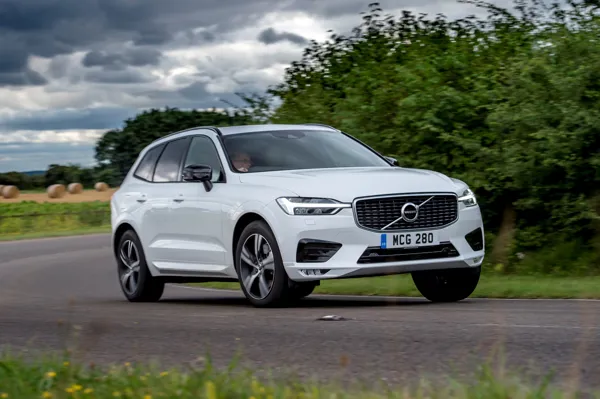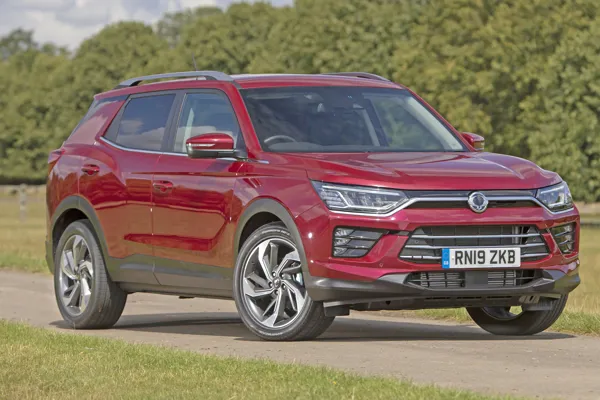Review
Final test - March 2017
Our Renault Kadjar has served us well over the past 12 months. We’ve managed to put 20,000 miles on the car and test it in a variety of driving conditions.
With CO2 emissions of 99g/km (17-inch wheels) its key rival is the car with which it shares a platform: the Nissan Qashqai. Both use the same smooth and refined 1.5-litre diesel engine, but Renault offers it with an automatic gearbox.
Unfortunately said gearbox has been the biggest criticism of the Kadjar, with everyone that’s driven it returning the same verdict that it would be ‘better with a manual’.
We suffered one recurring fault throughout our time with the Kadjar, its stop-start system has a habit of shutting the car down completely – requiring a manual re-start. I often switched the system off (as did others) for a less stressful drive.
After two trips to Renault – initially for a software update – a new battery seemed to solve the issue. Testing the Kadjar’s practicality was tricky as it was often trumped by other cars on our fleet which better suited the requirements at the time. It failed to match the load length of our Seat Leon estate when one colleague needed to collect some furniture and its 478-litre boot wasn’t quite big enough for another to take his family of four on holiday.
When travelling fully laden I found the 110PS engine struggled, especially on motorways. The more powerful 1.6-litre version copes better for those who regularly carry passengers or luggage – thanks to its extra mid-range power – and returned similar fuel economy.
The 1.5-litre engine should return 72.4mpg but Equa real-world testing suggests a figure of 48.2mpg. We managed to better the latter figure slightly but rarely got more than 53mpg from a tank of fuel. It’s still an impressive result as similar cars we have tested have struggled to get more than 40mpg.
The crossover market is becoming increasingly competitive but thanks to its frugal powertrains and low P11D values, the Kadjar is one of the cheapest SUVs to operate in any derivative.
February 2017
The need to offer fuel-efficient driving affects all models, even those in the burgeoning SUV/crossover sector where space and the ability to create a sense of on- and off-road motoring are among the key sales factors.
To maximise the Kadjar’s efficiency credentials, Renault turned to an old favourite – its venerable 1.5-litre diesel engine.
It was developed 16 years ago as part of the Renault-Nissan partnership and originally featured in the Clio and Micra. More recently Nissan has fitted it to the best-selling Qashqai.
Extra bragging rights for this engine come courtesy of the fact that Mercedes-Benz opted to fit it in the latest A-Class and CLA, while it also features on Nissan’s luxury brand Infiniti in the Q30.
It’s a difficult unit to fault as Renault’s engineers have done a fine job of bringing the engine up-to-date with a diesel particulate filter and a variable geometry turbocharger. It’s also very quiet, producing little more than a hum.
In fact, it sounds more like a four-cylinder petrol when you work it hard and makes almost no noise at all when idling.
Renault’s official mpg figure of 72 combined is a little optimistic, however. Between fill-ups our Kadjar consistently returns between 50 and 53mpg.
What I have found interesting is that variation in driving style does little to affect the figure.
On a long run the best I’ve seen reported on the trip computer is 64mpg but by the time the tank is drained it’s back to the low-50s.
January 2017
I’ll admit I’m pretty lazy when it comes to gearboxes and I often succumb to the allure of the ‘automatic transmission’ tickbox when ordering a car.
However, regular readers of my long-term column may remember that the Kadjar and I didn’t get off to the best start (Fleet News, September 15) and I was pretty disappointed by its self-shifting abilities.
In fairness to Renault, it has done a good job of keeping the CO2 emissions and fuel consumption on par with the manual, but I thought it best to try out a Kadjar with three pedals to see if I’ve been missing out.
In short, I have. You know a gearbox is good if you can set off first time without stalling – or riding the clutch to 3,000rpm – and I’m pleased to report the manual Kadjar is a real pleasure to drive.
The gear lever is well positioned and cogs are found effortlessly, plus the clutch pedal is well-weighted, allowing for a perfectly executed pull-away every time.
I noticed no miles-per-gallon difference over the week I had the car but fleet drivers will benefit from a modest £50 per-year saving in company car tax due to its lower list price (£23,590).
But the more savvy customer will notice that instead of paying £1,200 for the automatic gearbox, upgrading to the higher spec Signature Nav model costs exactly the same (£24,790).
Given the manual box is so good, I would much rather opt for the higher specified car which has LED headlights, a full-length glass roof and Bose audio system.
With the 1.5-litre diesel engine, company car tax is identical and as the Signature has higher residuals (£7,375 versus £7,250) it’s actually cheaper over a four-year cycle.
On the latest model update Renault has addressed a few minor niggles and I was pleased that the door mirror adjustment switch is now illuminated and the electric folding mirrors operate automatically when locking.
December 2016
It’s difficult not to look at our long-term Renault Kadjar test car and think ‘the wheels are too small’. Its imposing front end and high-riding body just looks out of place on the 17-inch caster wheels our car is fitted with.
There is, however, a good reason we selected this no-cost option over the 19-inch black and silver wheels that are fitted as standard on this Dynamique S model.
It’s all about CO2; with the more tasteful, larger wheels fitted, the Kadjar emits 103g/km, but swapping to these smaller ones means our car emits 99g/km, dropping it into the 19% benefit-in-kind (BIK) tax band.
This saves the driver around £50 per year in company car tax – admittedly not a life-changing saving, especially when Renault gives no money back for not taking the nicer wheels.
Nonetheless, it means there is no annual VED to pay (otherwise £20) and for those with a 100g/km CO2 cap it might just put the SUV within reach.
I tried a Kadjar with larger wheels and found grip levels to be better. There was also less body roll, making for a more confident drive.
In part, this may be down to the tyres. On 17-inch wheels the car rides on high-profile Continental Eco-Sport’s, whereas the larger rims are shod with lower-profile SportContact5 rubber.
For the sake of £70 per year, I would prefer to go for the latter.
The Kadjar’s looks have been a point of frequent discussion in the Fleet News office and my opinion has been swayed.
At first I thought the car looked too bulbous and less prestige than rivals but the car has grown on me, especially in the fetching Flame Red metallic paint. It just stands out as an attractive SUV among more humdrum rivals.
As we have just taken delivery of a new Seat Ateca, one of the Kadjar’s key rivals, it will be interesting to pitch the two against each other in the coming months.
November 2016
In the past month I’ve noticed a drop in our long-term Renault Kadjar’s average miles per gallon from 56 to 51.
Initially I thought it was due to colder weather. But, with October being tyre safety month, I was reminded to check the tyre pressures.
Given the car is only six months old I wasn’t expecting any drastic changes but the reality was quite the opposite. All four wheels were at least six PSI under the recommended figure, with the fronts performing slightly worse.
Five minutes later I had them all inflated with the correct amount of air, and the difference is remarkable. I have restored my missing mpg and the car feels much more eager than before.
The exercise is a perfect example of why basic regular checks should not be ignored (our policy is weekly). Not only is the car now safer but also cheaper to run.
The Kadjar does have an on-board tyre pressure monitoring system, which apparently will warn me if there is a significant drop, such as a blowout – but I’m pretty sure I wouldn’t need a warning bong in that situation.
However it reads in bar which for me is pretty useless because I’ve become so accustomed to PSI.With the correct conversion mentally noted, I’ll be sure to keep a closer eye on the readout in future.
October 2016
Since my last update the Kadjar has reached 11,000-miles, which means there are 7,000 remaining until it needs its first service.
The majority of the miles have passed without a hitch, but there have been a few glitches along the way. They seem to be centred on the Kadjar’s R-Link 2 multimedia system.
One morning it decided to freeze and shut down leaving me with no music or sat-nav.
On another journey the audio output became distorted and I ended up switching it off altogether. Both faults disappeared after a re-start but have tainted my opinion of an otherwise excellent system.
Connected services provide up-to-the-minute traffic alerts through the sat-nav, which uses TomTom software with crisp graphics and an intuitive interface.
My other gripe is with the stop-start which has an annoying habit of randomly shutting the entire car down as a previous tester noted. The tell-tale is that the courtesy lights come on, which has led to me glancing up at them every time I stop.
Niggles aside, the Kadjar is an easy car to live with. There are some great features such as keyless entry and start, automatic main-beam activation and an electric handbrake.
Clearly the car was designed with the family in mind, and that’s no surprise seeing as it is based on the Nissan Qashqai – the car that bought affordable SUVs to the family market.
I don’t have any cherubs of my own to test the Kadjar’s 1,478-litre maximum load space, but with a few cars in the garage in need of restoration I opted to see how it coped with two sets of alloy wheels with tyres. The Kadjar swallowed the load with ease, folding its rear seats at the flick of a switch.
Overall it’s an impressive package for £24,790. Compact dimensions mean it’s easy to park and the gutsy 1.5-litre diesel engine is surprisingly efficient – it has torn up the SUV rule book and is better as a result.
September 2016
‘Left-foot braking’ is not a phrase you usually find in Fleet News – it is a practice usually reserved for race and rally drivers to maximise cornering speed while maintaining optimal weight balance; technical stuff. But since taking custody of our Renault Kadjar long-term test car I have found new use for the technique.
In this mid-size diesel crossover I have found a more humdrum use for my left foot: to stop the car from rolling back on hills.
The Kadjar is equipped with Renault’s Efficient Dual Clutch (EDC) automatic transmission, which is essentially its version of Volkswagen’s Direct Shift (DSG) gearbox.
The similarities are few and far between on the road though. Where a DSG executes lightning quick changes both up and down the ratios, the EDC hangs on to gears and drags out shifts in a rather lackadaisical manner.
Unlike any automatic gearbox I have experienced before – and there have been a few – the EDC disengages drive when you stop, so unlike a conventional auto it doesn’t immediately creep when you are ready to go.
To combat the issue, Renault fitted hill-start assist, a feature to hold the brakes until sufficient power is applied to set off. Great! Except this feature only engages when the stop-start system activates.
So if you find yourself stuck in traffic on a hill, which I do every morning, it’s unlikely you will be stopped long enough to use stop-start.
What’s more, there is no conventional handbrake to grab. Instead, an electronic unit is fitted, which is impractical to use in slow moving traffic – meaning one must employ the left foot in order to carry out the perfect hill start.
Despite its shortcomings, the EDC does deliver efficiency. There is no CO2 penalty for choosing the self-shifter and regular long trips are netting impressive fuel economy for a car of this size. I have been getting a minimum of 54mpg between fill-ups, with a peak of 61mpg. The Kadjar is proving to be a reasonable performer on our fleet with space, comfort and style to spare.
August 2016
An internal swap of long-term cars recently put me behind the wheel of our Renault Kadjar for a week. It’s been a while since I last drove a Renault, so I was looking forward to seeing whether the experience had improved.
It had: the car was comfortable, surprisingly engaging to drive for a mid-size SUV – with lots of grip and minimal body roll – and easily returned mid-60s fuel consumption. The 1.5-litre engine was smooth, quiet and responsive.
However, there were a few glitches with the automatic gearbox. The transmission was slow to engage, especially from first to reverse. I also encountered issues with the stop-start, which was lazy to fire up, particularly when the car was stationary for more than a minute. On one occasion, it even rolled back a couple of inches when I lifted my foot off the brake before the engine came to life, something I’ve never had happen before. Another time, the car simply refused to restart while I was sitting at the lights – it required moving the gearstick to park and pressing the start button.
I also had an ‘interesting’ experience with the trip computer related to the mileage countdown until empty. I rarely allow the tank to go below a quarter, so this might be an anomaly on other cars, but on one journey, safe in the knowledge that I had a good 30 miles in reserve, I pushed on rather than pulling into overpriced motorway services.
However, when the countdown reached 50 miles to go, it disappeared from the screen, replaced by a series of dashes. Why? It was disconcerting, especially when the final bar of fuel disappeared four miles from my chosen fuel station.
Such niggles aside, it’s obvious why the Kadjar has already sold 10,619 units year-to-date, of which 68% are in fleet (more than the Škoda Yeti and BMW X1, but 23,000 off the class-leading Nissan Qashqai): it has the looks, drawing admiring glances from onlookers; it is a capable performer on the road; and has excellent seat comfort and leg/headroom.
So, lots of positives. Just opt for manual – three-quarters of buyers already do.
Stephen Briers
July 2016
Keyless entry and push button start are becoming more and more commonplace on new cars. So much so that a recent stint in the Vauxhall Astra left me momentarily confused as I searched for a non-existant start button. I hadn’t expected to have to put the key in the ignition and turn it.
The Kadjar is no exception; as long as you have the ‘fob’ on or about your person, the doors can be locked and unlocked by pressing a small button on the door handle. Similarly, as long as the car can sense that the ‘fob’ is present, engine starting is via a push button on the dash.
Both these systems work faultlessly and I am a big fan of the keyless car. The problem, however, is with the ‘fob’ (I call it that as I’m not sure what else to call it). It doesn’t have to be put into a slot in the dashboard like the old card system of Renault’s past, it doesn’t have a key and you can’t attach it to your key chain – you just need to have it with you.
Renault has, in my opinion, gone for form over function with this particular device – it’s oversized for function (think small mobile phone rather than compact key fob) and gives you another thing to carry in your pocket (if you’re a man) or lose in your handbag if you’re a woman.
As I say, I am a big fan of the keyless car but a small fob to attach to your house keys would have sufficed. As an integral part of something designed for ultimate convenience, it isn’t actually very convenient.
Luke Neal
June 2016
There’s no doubt that the front-end design of the Kadjar gives it road presence. In fact, all current Renault models have it. From Clio to Trafic they all share one thing in common: big eyes, an oversized nose and a wide mouth – Renault has created an unmistakable family resemblance that could equally be at home on a kids’ TV series as well as on our roads. It gives the Kadjar a likeable and purposeful look that somehow feels safe and reassuring.
A recent return trip from Peterborough to Bristol gave the chance to stretch the Kadjar’s legs and assess comfort levels over an extended period. I’ve still yet to improve on the 60mpg of my previous review (if fact it has dropped just below, to 59.4) during regular driving so I was interested to see how the 1.5-litre diesel would perform during pure motorway use. The results were impressive, with the onboard display showing 78.9mpg after two continuous hours.
The entire trip was comfortable and enjoyable, the only oddity being the cruise control on/off switch which is located next to the gear stick, while the controls are on the steering wheel.
Luke Neal
Specs
| Manufacturer | Renault |
| Model | KADJAR |
| Specification | KADJAR SUV 2wd 1.5dCi 110 DPF SS €6 Dynamique S Nav 6Spd 15MY |
| Model Year | 0.00 |
| Annual VED (Road tax) | £0 |
| BIK List Price | £24,600 |
| CO2 | 103g/km |
| BIK Percentage | 25% |
| Insurance Group | N/A |
| CC | N/A |
| Fuel Type | Diesel |
| Vehicle Type | SUV and Crossover |
| Luggage capacity (Seats up) | 5litres |
Running Costs
| P11D | £24,600 |
| Insurance group | N/A |
| Fuel Type | Diesel |
| Cost per mile | 62.55ppm |
| Fuel | 7.02ppm |
| Depreciation | 53.54ppm |
| Service maintenance and repair | 1.99ppm |
Rivals
Info at a glance
-
P11D Price
£24,600
-
MPG
72.4 -
CO2 Emissions
103g/km -
BIK %
25% -
Running cost
3 Year 60k : N/A 4 Year 80k : N/A -
Fuel Type
Diesel



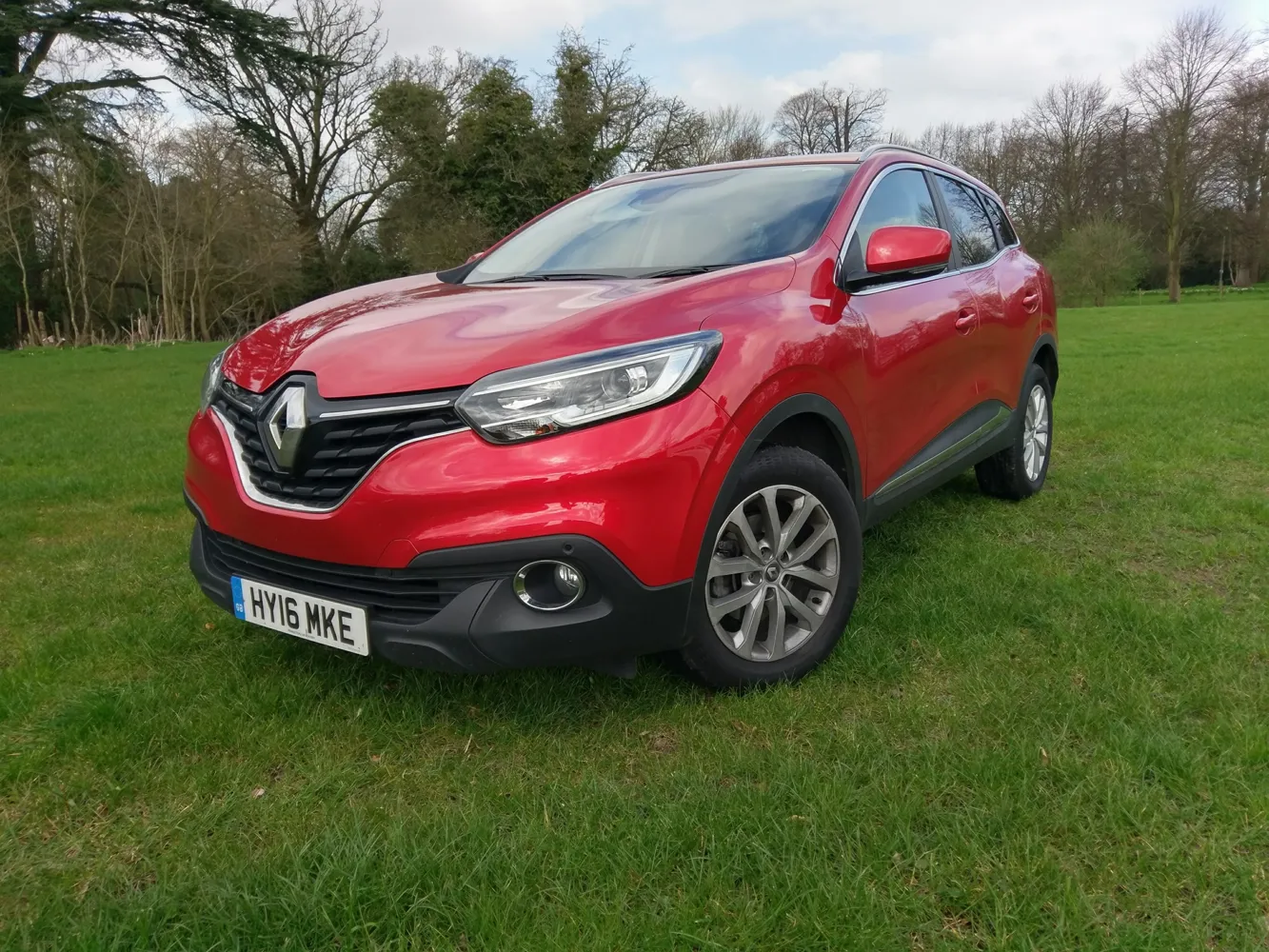


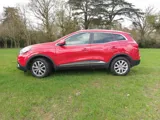
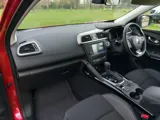

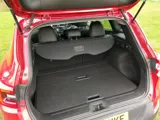



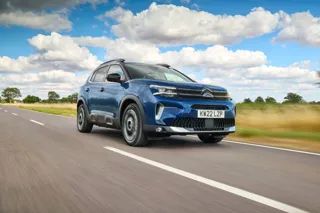
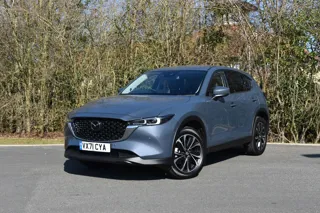

 Diesel
Diesel



